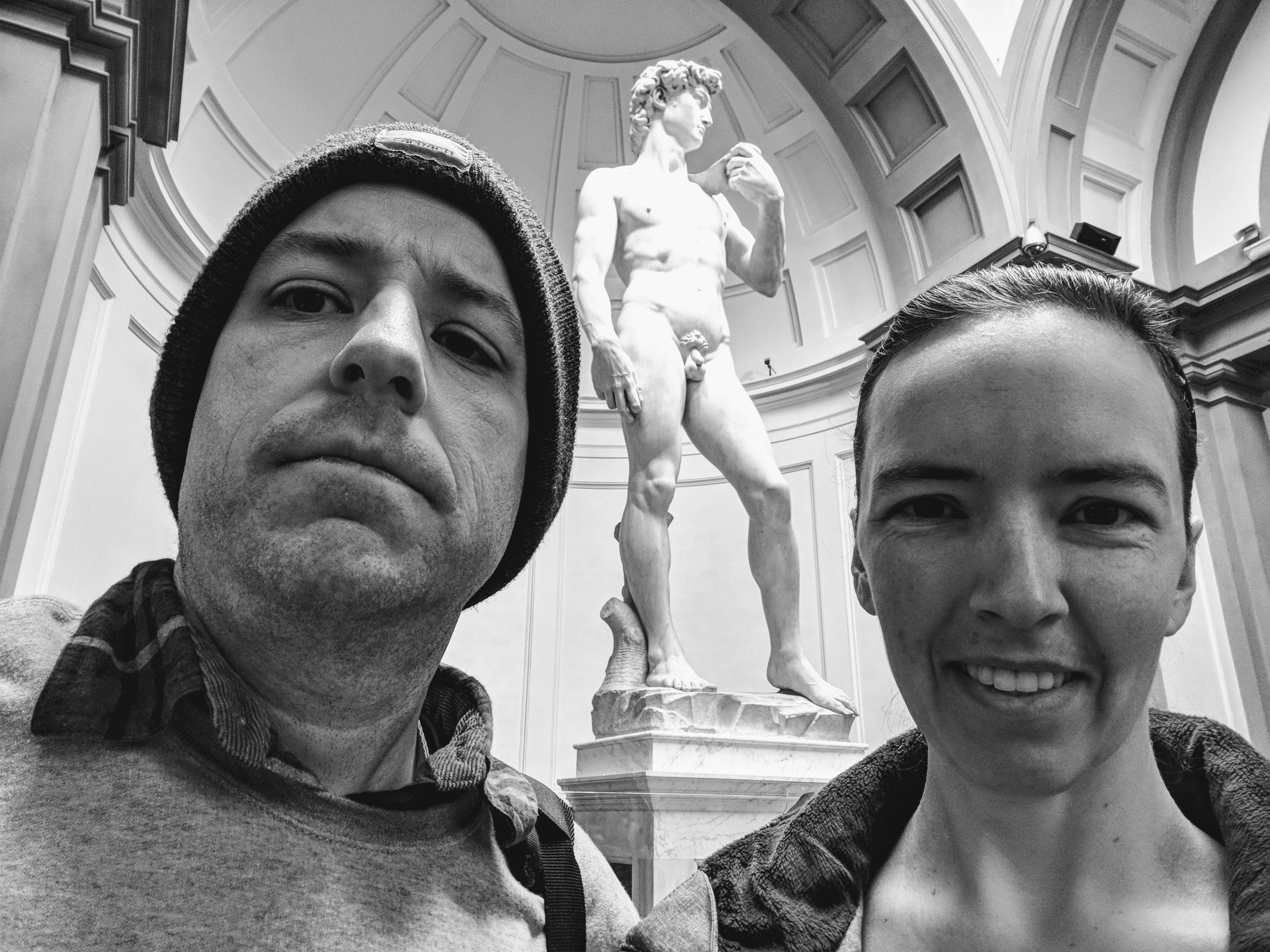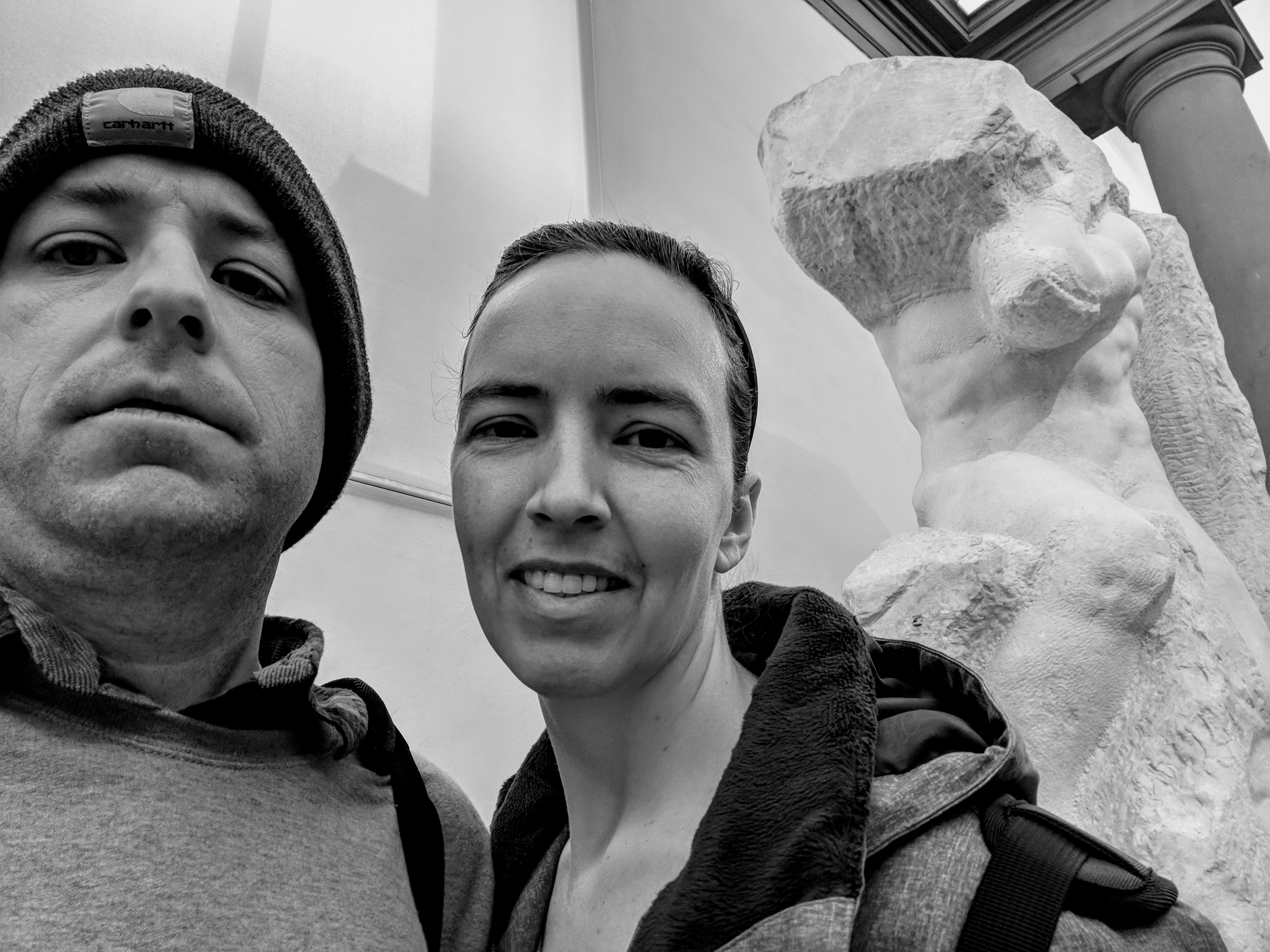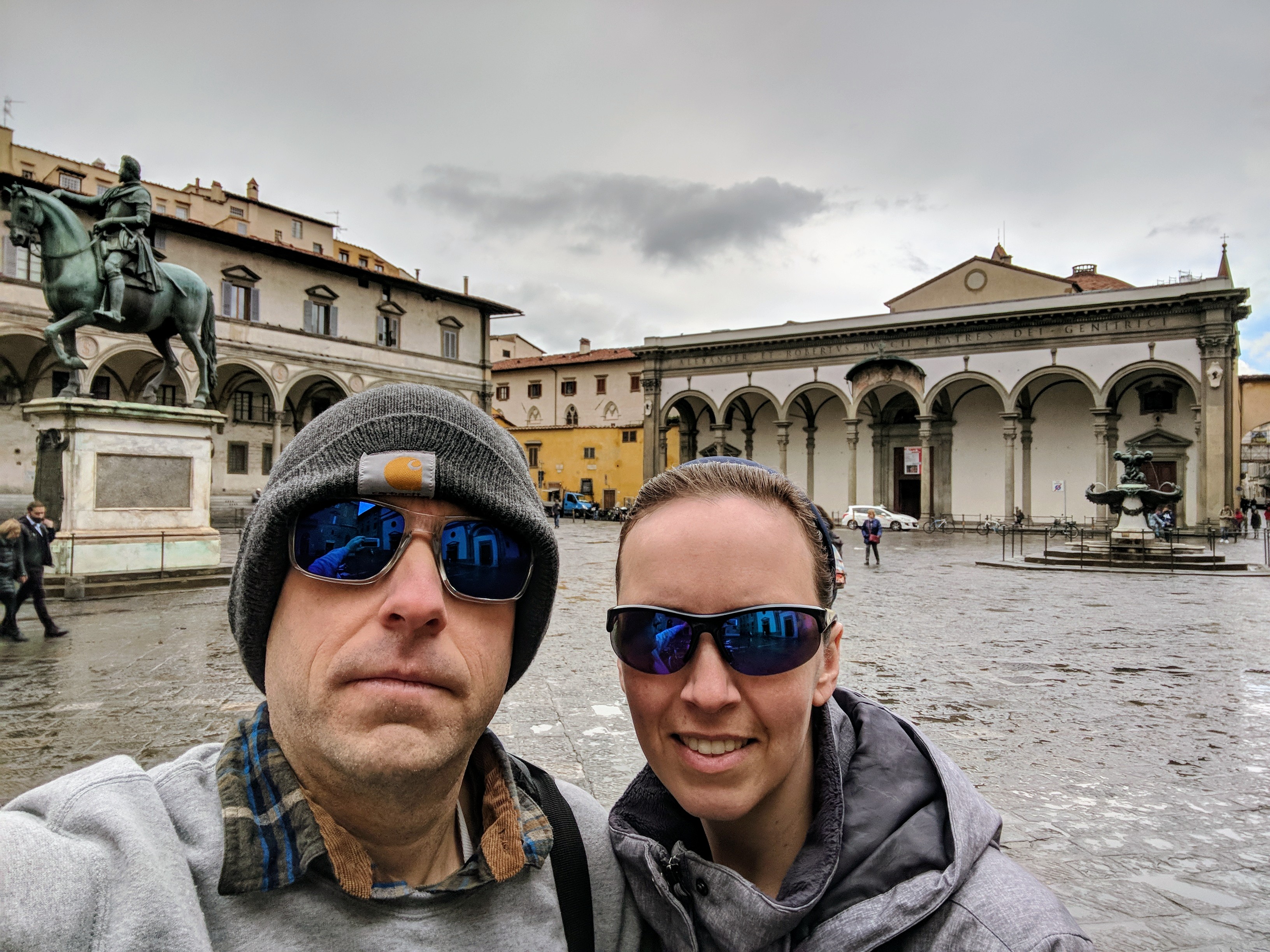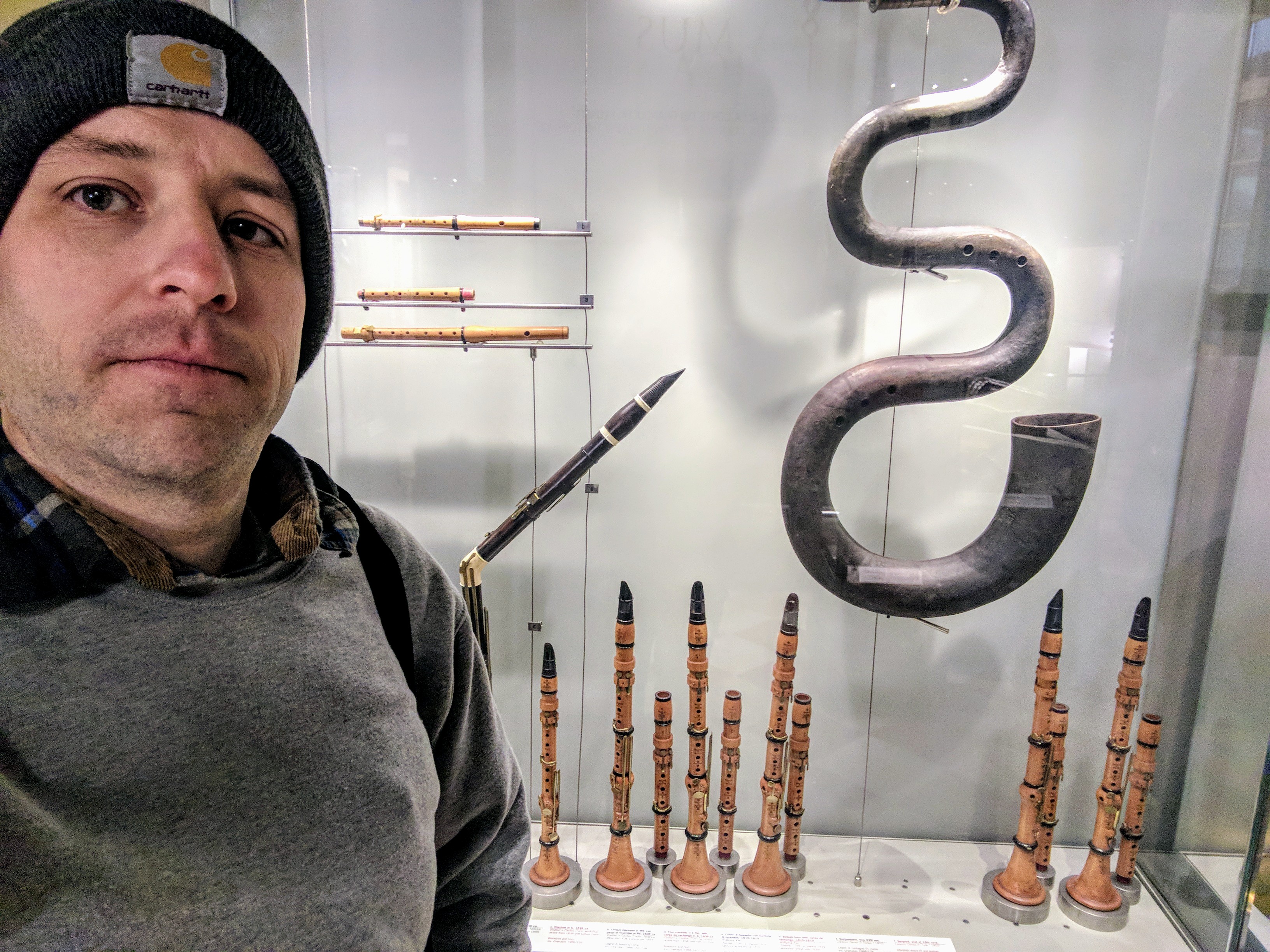Accademia
Thu Nov 30, 2017 11:06 amOn Thursday we visited the Accademia in order to see David, the greatest sculpture in the World, carved in Marble by the World's Greatest Sculptor.

David, by Michelangelo, the greatest sculpture in the World, exemplifies Renaissance Art and Mannerism. Renaissance because of the detail, perspective, contrapposto stance, proportionality, and anatomical correctness; Mannerism because his idealized hands are a little too big. The Renaissance was about rediscovering the skill of Ancient Rome and Greece, which had been absent in Western Europe during the intervening millennium.
David is the unofficial symbol of Florence, was meant to stand atop Florence Cathedral, but instead stood in front of Palazzo Vecchio (where a replica now stands).

Unfinished Atlas Slave, is one of series of unfinished sculptures known as Prigioni, by Michelangelo, who were intended for the tomb of Pope Julius II, which was never completed.
Julius II was Pope during the time period when the Medici were exiled and cast out of Florence. He also commissioned the painting of the Ceiling of the Sistine Chapel by Michelangelo, as well as the Raphael Rooms by Raphael in Vatican Palace, of which School of Athens is the most famous fresco.

Piazza della Santissima Annunziata translates to Square of the Holy Annunciation, in honor of Mary receiving an announcement from the Angel Gabriel that she will be the Mother of Jesus Christ.

Florence was an important Cultural Center in Europe.
